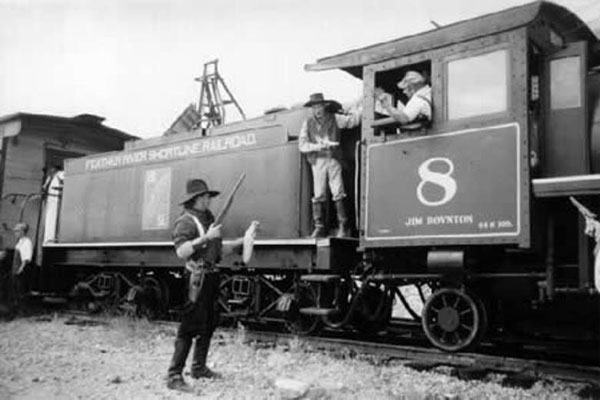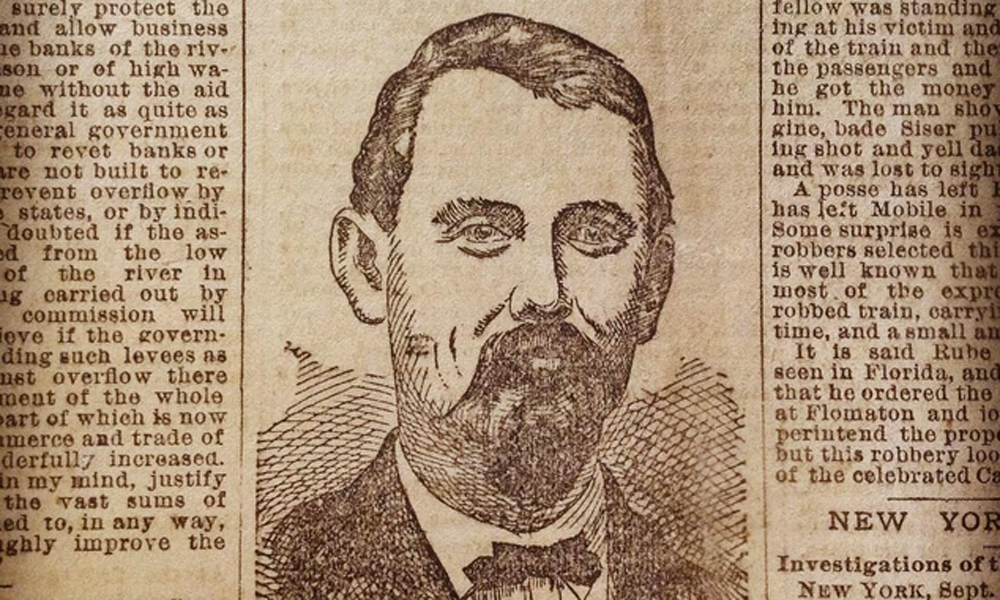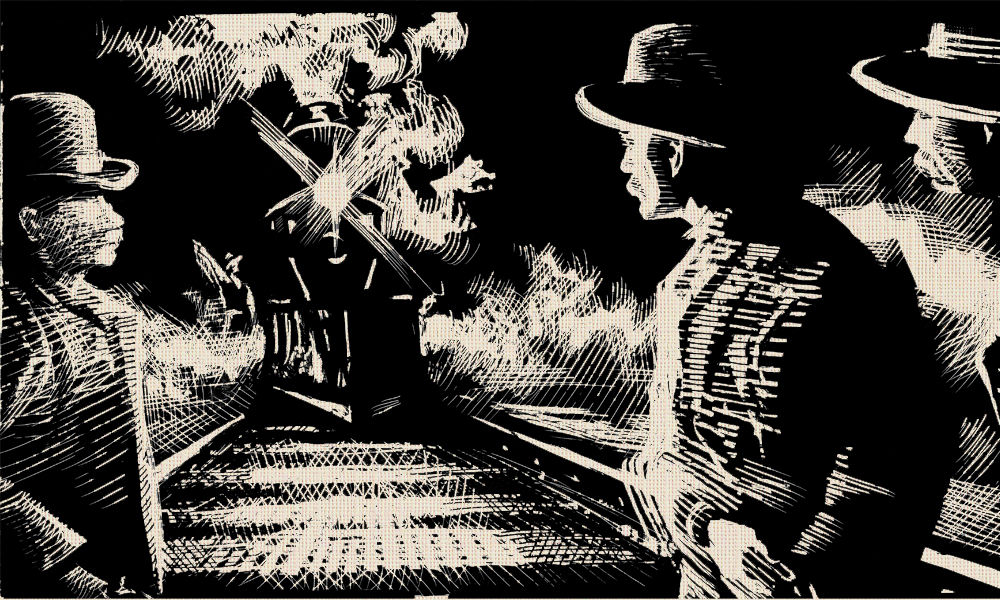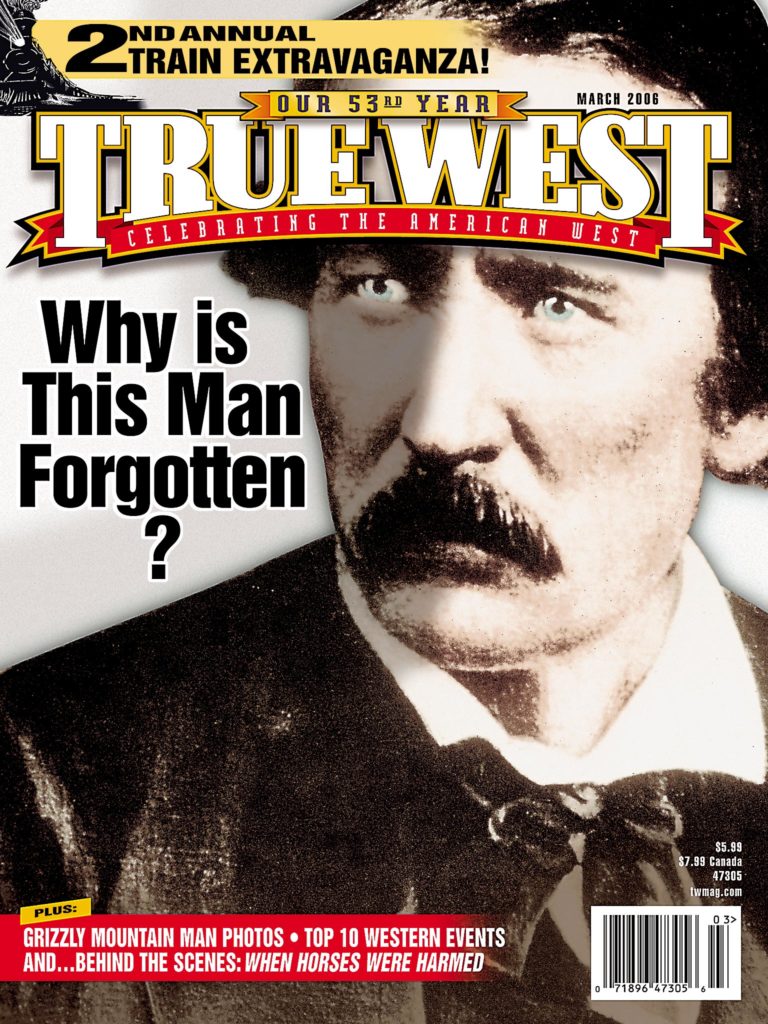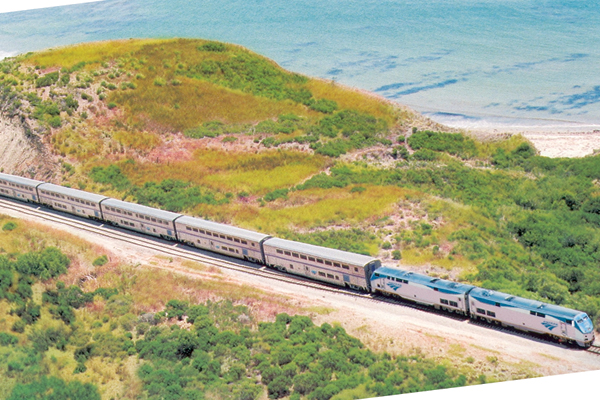 The best train ride in America runs through some of its most beautiful land and some of its richest Western history.
The best train ride in America runs through some of its most beautiful land and some of its richest Western history.
Besides, this ride is a whole lot of fun; the kind of fun you can only get if you travel by train.
That’s why it’s easy to predict no one ever forgets Amtrak’s 1,390-mile “Coast Starlight” that runs between two of the West’s most historic cities—Los Angeles, named by the conquistadors, and Seattle, named for a Native American chief.
The beauty alone is worth the ticket. If you start from the southern end, you’ll think it can’t get much better than the couple hours spent snuggled next to the Pacific Ocean—sometimes, the only road is east of the tracks, giving you a more intimate look at the ocean from your train window than you can get anywhere.
But then when you hit the breathtaking mountains and forests of Oregon, knowing you can only get some of these views from the train … but let’s not get too far ahead of the story, because it’s best to savor each and every morsel of the ride.
Couple the beauty with the incredible history of the communities that hear the wail of this train’s whistle—a history that speaks of Spanish explorers and miners, of hardship and triumph.
As Amtrak itself likes to promote this route: “From snowcapped mountain peaks to Pacific Ocean vistas, discover the spectacular scenery, history and thriving cities that are uniquely the American West Coast.”
My trip on the Coast Starlight this past summer not only purchased forever memories, but new acquaintances, delightful encounters and a renewed sense of the rich legacy of the Old West.
Return of the Train
Anyone who hasn’t discovered the joy of train travel is missing out on an experience our pioneer ancestors relished.
It’s hard to overstate the significance of the railroad to settling the West. Some consider it the deciding factor in linking the newest part of the nation to the oldest. With the railroad, people could travel without the torture of the covered wagon; goods and services could be delivered in a timely way; communities “arrived” when the train came to town.
Considering how important the railroad was to Western America in the late 1800s, it’s not only a shame but disrespectful that train travel became so irrelevant by the mid-1900s. Since then, traveling by train has become as foreign to most Americans as traveling on a stagecoach. The railroad itself helped push away passengers, opting to concentrate on freight service. The private automobile, buses and airline travel provided options. Besides, we got in a hurry—limited vacation times and constant deadlines at home and at work made train travel way too slow.
So it is all the more amazing—and still a secret in many circles—that so many have rediscovered the joy of train travel; it’s delightful to see full trains that prove Americans have decided it is worth the time to take the train. These are the folks who know that the trip is part of the journey. (Train travel isn’t a new idea for our European cousins, who have never abandoned their trains and frankly, they think we’re a little nutty for being so shortsighted.)
Amtrak has helped by upgrading some of its cars and equipment, serving delicious meals and offering a very user-friendly environment. But Amtrak is hampered by a Congress that is constantly threatening to pull all its subsidies and only renews its support in short spurts, making it difficult to finance long-term improvements.
Even given the shortcomings, Amtrak has been smart in the people it hires. Friendly porters are everywhere, ready to help make the trip more enjoyable. Often, these men and women are walking encyclopedias about the route.
From Memorial Day to Labor Day, Amtrak spotlights its “Trails and Rails” program—an “onboard partnership” with the National Park Service to be sure travelers learn about the cultural, historical and ecological significance of the land they’re traveling through.
Sometimes historians join the train to give personal lectures about an area; sometimes a film or documentary is shown. A 30-minute Lewis and Clark film was popular last summer, especially along the Amtrak routes from the Pacific Coast to North Dakota, which basically followed the same path the explorers took 200 years ago.
Besides the intercity travel Amtrak provides, the West is also full of “tourist trains” that provide great day trips. Almost every Western state offers some kind of tourist train, and many have become very popular. (The Verde Canyon Railroad, calling itself “Arizona’s longest-running nature show,” takes you into the nesting ground of the American bald eagle; Colorado’s Durango and Silverton Narrow Gauge Railroad takes you into the mountains of legendary gold and silver miners.) These privately-owned trains started as a labor of love by men and women who couldn’t bear to see the tracks unused and the cars untended. Sometimes they invested their life savings to save the trains. Thankfully, many of these trains have been successful and now are a thriving business (in rural areas, they’re also often a major employer). America owes these “train nuts” a hug of appreciation for giving us back pieces of our legacy.
Amtrak is well aware that in serving the Western United States, it is traveling through some precious country. It says so itself: “It’s the land of the wagon trains and the Gold Rush and legendary cities. Even the landscape is entertaining. Red canyons that echo with the cries of ancient warriors. Towering rock formations surrounded by myth…. Waves crashing against the jagged beauty of the Pacific Coast. Here, it’s easy for a human being to believe that anything is possible. Amtrak gives you a front-row seat for the show, and the time and space to contemplate how this part of our country has captured the world’s most vivid imaginations.”
Nowhere are those words more true than on the Coast Starlight.
Back to the 1700s
It’s easy to be transported back in time when you sit in the last great “union station” built in America. Los Angeles’ Union Station is a blend of Spanish and Art Deco styles that makes you feel like you’re on a movie set. By the time it was built in 1939, the city was already 158 years old, and its real name—El Pueblo de Nuestra Senora de la Reina de Los Angeles—had been shortened. The station sits in downtown across the street from the original village, now marked by a colorful historic district known as Olvera Street.
Ahead is a traveling adventure unmatched by any other Amtrak train or route. Although Amtrak offers trains that can take you across the country ocean to ocean—one major route through the southern United States, the other through the north—it is on this north-south Coast Starlight that it pulls out all the stops. A special “parlor car” is found only on this line, giving passengers who have booked sleeping arrangements a level of luxury.
The parlor is where everyone hangs out. In the mornings, a continental breakfast is laid out while folks await their reservation in the dining car; in the afternoon, cheese and crackers accompany daily wine tastings; a theater offers movies; and the comfortable swivel seats are conducive for not only sight-seeing but also visiting.
And visiting is the name of the game in train travel. Oh, you could hide out at your seat or in your sleeping chamber, but those kind of hermits are usually found on airplanes, not trains.
If America has a living room, it’s a gathering place on an Amtrak train—the coach cars, the dining car, the parlor.
Last summer, the people traveling on the Coast Starlight included 31 people from the United Kingdom who were spending three weeks traveling America—almost every mile by train. Among them were Ray and Barbara from Scotland who thought the trip was “divine,” but the tracks were “rubbish.” (Yes, they do get rough in places.) Then there was a 60-ish couple who had just taken their 19th foster child to meet her new adoptive parents. A couple charmers were 8-year-old Nina and 9-year-old Taylor, strangers who became instant friends as only children can, who loved sharing their card tricks and all train gossip. Among the most fun were three baby-boomer couples on their way to a motorcycle trip through northern California. Among the most disarming were the 80-ish couple who were returning from a gambling weekend and regaled their dinner companion with tales of their life together. When asked how long they’d been married, they winked and admitted they weren’t!
And speaking of eating, the dining car is about the most popular place aboard a train. It offers three full meals, and most first-time riders are surprised at both the selection and quality. The price of meals is included in the cost of a sleeping car ticket, so all the sleepers are constantly eating. (Coach ticket holders pay per meal, and besides the dining car, there’s a snack bar that offers everything from hot pizza to candy.)
“Railroad French toast” is one breakfast favorite, while lunch offers a variety of burgers—meat, chicken and vegetarian. Dinner includes New York strip steak, lamb shank, catfish and roast chicken. Wine and beer are available, and the Chocolate Bombe dessert is so popular that there’s never any left by the time the trip is three-fourths over.
Remember, back in the parlor car, there’s always more food around—some travelers take to walking through several cars to get some exercise. The parlor car is staffed by a friendly attendant who makes sure you get the dining reservations you want, entertains you with bad jokes and alerts you to special spots along the way. And in the 34 hours and 15 minutes of this run, special spots are frequent.
Consider some of the things you can learn and see on this ride:
All the way from Los Angeles to Oakland, you’ll travel the same route as the old Spanish mission road, “El Camino Real” or “The Royal Road.” From 1769 to 1823, Franciscan Friar Junipero Serra—known as the Apostle of California—founded a chain of 21 missions and four mission chapels along this road. Each was built to be one day’s horseback journey from the next.
One of those missions you’ll travel through is San Luis Obispo, founded in 1772, and notable as the site where Spanish missionaries developed the technique to manufacture red tiles that became the symbol of mission architecture. Here is where you first get a full view of the Pacific; you’ll be following its coastline for the next 104 miles.
You’ll travel through the “Country’s Salad Bowl,” as Salinas calls itself; the “Artichoke Capital of the World” in Castroville; and the “Garlic Capital of the World” in San Jose. Thankfully, supper is not far off.
The San Francisco Amtrak station is next door to the famous landmark Ferry Building, which has been completely restored to its 1896 glory.
Upon reaching Sacramento, you’re not only in a state capital founded in 1849, but atthe western origin of the first transcontinental railroad. As the Central Pacific Railroad built tracks eastward, the Union Pacific Railroad was building them westward—the two met in Promontory, Utah, on May 10, 1869. This train goes past the remnants of shops where the original Central Pacific locomotives were built.
You get your first hint of the beauty ahead after Dunsmuir, California—Mount Shasta, the largest mountain of the Cascade range, dominates the view. At 14,162 feet, it is usually snow-covered and always beautiful. Some of the most dramatic views of this mountain are seen from this train.
You can smell Oregon—at least, you eventually realize that scent of freshly cut wood is the sign that you’ve crossed the border into a major logging state. (Eugene-Springfield is known as the “Lumber Capital of the U.S.”)
From Springfield, Oregon, our train starts climbing into the Cascade Mountains. Nobody has yet invented the words that can describe this spectacular scenery. Some suggest that “takes your breath away” comes as close as you can get. This train crosses the Willamette Pass and goes through 22 tunnels.
From the train window, you see Salem’s memorial to the spirit of the pioneers who settled Oregon: a gold-plated statue of a man holding an ax, perched atop the state capitol.
As you pass through Vancouver, Washington, you learn the Hudson Bay Company built Fort Vancouver in 1824 as a trading post, making it the oldest continuous settlement in the Pacific Northwest.
Centralia—founded in 1875 by a former Virginia slave—still has some grayish ash from the 1980 eruption of nearby Mount St. Helens, which can be seen in the distance.
It’s apropos that the King Street Station in Seattle is being restored as lovingly as the Los Angeles station you left a day and a half ago—but this one is far older, built in 1906. Now you’re in a newer city—founded in 1851—named for Chief Sealth, leader of the Duwamish and Suquamish tribes.
Is it any wonder that this is a ride most people want to repeat? The Coast Starlight deserves the title as the best train ride in America.


